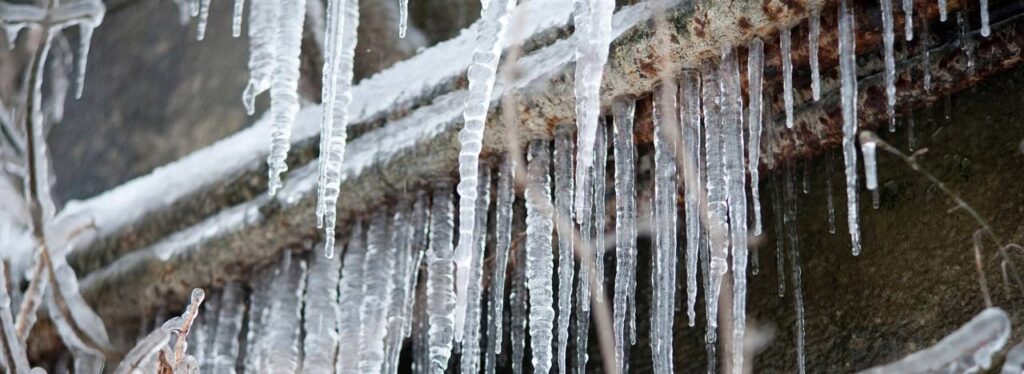Just how do you really feel in regards to 6 Ways to Prevent Frozen Pipes?

Cold weather can damage your plumbing, especially by freezing pipes. Right here's how to avoid it from happening and what to do if it does.
Introduction
As temperatures decline, the risk of frozen pipelines increases, potentially causing costly repair work and water damage. Comprehending just how to stop frozen pipes is important for house owners in cool environments.
Understanding Frozen Pipes
What creates pipelines to ice up?
Pipes freeze when exposed to temperature levels below 32 ° F (0 ° C) for extended durations. As water inside the pipes ices up, it increases, taxing the pipe walls and possibly triggering them to burst.
Threats and damages
Icy pipelines can bring about water system disturbances, home damage, and pricey repair work. Burst pipelines can flooding homes and cause extensive architectural damages.
Signs of Frozen Pipes
Recognizing frozen pipelines early can prevent them from rupturing.
How to determine icy pipes
Search for lowered water circulation from faucets, unusual odors or sounds from pipelines, and noticeable frost on exposed pipes.
Prevention Tips
Shielding at risk pipes
Cover pipelines in insulation sleeves or make use of heat tape to safeguard them from freezing temperatures. Focus on pipes in unheated or exterior areas of the home.
Heating strategies
Maintain interior areas appropriately warmed, specifically locations with plumbing. Open cabinet doors to allow cozy air to distribute around pipelines under sinks.
Securing Outside Plumbing
Garden tubes and outside faucets
Separate and drain pipes garden tubes prior to winter. Mount frost-proof spigots or cover exterior taps with insulated caps.
What to Do If Your Pipes Freeze
Immediate activities to take
If you think icy pipes, maintain taps available to relieve pressure as the ice thaws. Make use of a hairdryer or towels soaked in hot water to thaw pipelines slowly.
Long-Term Solutions
Structural changes
Consider rerouting pipes away from outside wall surfaces or unheated locations. Include added insulation to attics, basements, and crawl spaces.
Upgrading insulation
Purchase top notch insulation for pipelines, attic rooms, and wall surfaces. Appropriate insulation assists preserve regular temperature levels and minimizes the risk of frozen pipelines.
Verdict
Avoiding frozen pipelines needs positive actions and fast responses. By understanding the causes, signs, and preventive measures, homeowners can secure their pipes throughout winter.
6 Proven Ways to Prevent Frozen Pipes and Protect Your Home
Disconnect and Drain Garden Hoses
Before winter arrives, start by disconnecting your garden hoses and draining any remaining water. Close the shut-off valves that supply outdoor hose bibs and leave the outdoor faucet open to allow any residual water to drain. For extra protection, consider using faucet covers throughout the colder months. It’s also important to drain water from any sprinkler supply lines following the manufacturer’s directions.
Insulate Exposed Pipes
Insulating your pipes is an effective way to prevent freezing. Pipe insulation is readily available at home improvement stores and is relatively inexpensive. Pay close attention to pipes in unheated areas such as the attic, basement, crawl spaces, or garage. Apply foam insulation generously to create a buffer against the cold. You can also wrap your pipes in heat tape or thermostat-controlled heat cables for added warmth.
Seal Air Leaks
Inspect your home for any cracks or openings that could let in cold air. Seal any holes around the piping in interior or exterior walls, as well as the sill plates where your home rests on its foundation. Additionally, make sure to keep your garage door closed unless you’re entering or exiting. Leaving it open creates a significant air leak that can lead to frozen pipes.
Allow Warm Air Circulation
During cold snaps, it’s essential to allow warm air to circulate evenly throughout your home. Leave interior doors ajar to promote better airflow. Open kitchen and bathroom cabinets to help distribute heat consistently around the rooms. If you have small children or pets, be sure to remove any household chemicals or potentially harmful cleaners from open cabinets for safety.
Let Faucets Drip
A small trickle of water can make a big difference in preventing ice formation inside your pipes. When temperatures drop significantly, start a drip of water from all faucets served by exposed pipes. This continuous flow helps prevent the water from freezing. Additionally, running a few faucets slightly can relieve pressure inside the pipes, reducing the chances of a rupture if the water inside does freeze.
https://choateshvac.com/6-proven-ways-to-prevent-frozen-pipes-and-protect-your-home/

I stumbled upon that piece of writing on Winter Plumbing Precautions: Preventing Frozen Pipes while surfing around the web. Are you aware of someone else who is fascinated with Winter Plumbing Precautions: Preventing Frozen Pipes? Please feel free to promote it. Thanks a lot for your time invested reading it.
Phone
Comments on “Preventing Frozen Pipes: Effective Methods for Cold Weather”